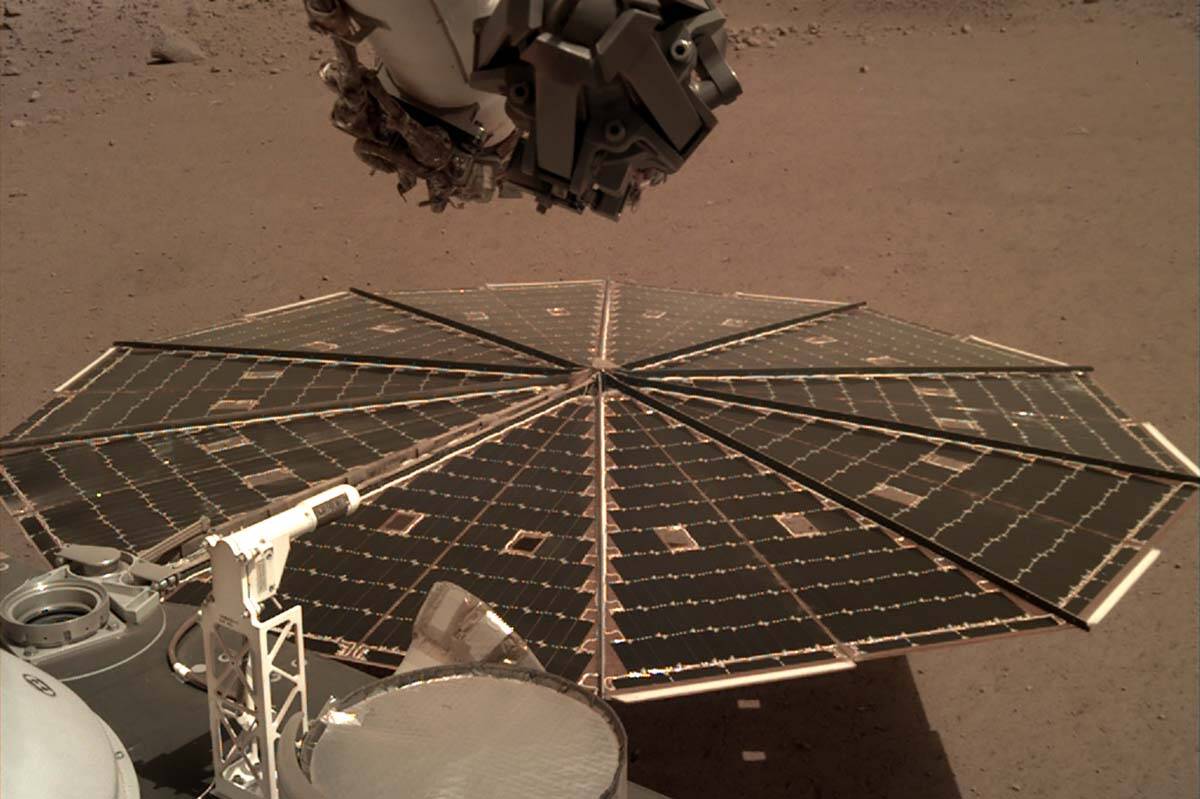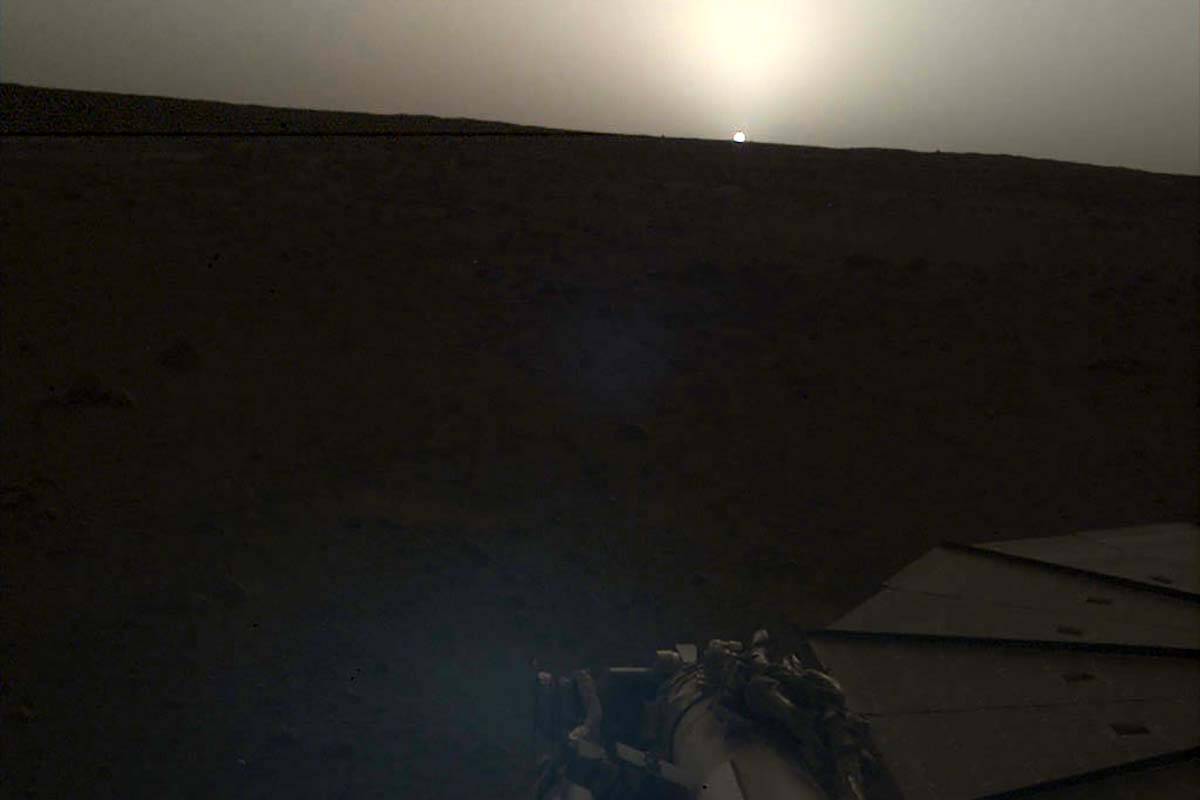Red Martian dust is slowly settling on the solar panels of a NASA robot, spelling the end to a four-year mission to examine the inner workings of Mars.
Launched in 2018, the InSight lander was NASA’s first Martian landfall since 2012. It was also the first to successfully measure the planet’s crust, mantle and core.
Using its six-foot-long arm, the stationary robot was able to place a mechanical mole and seismometer on the ground. The self-hammering mole then burrowed 16 feet down to measure the planet’s internal heat, while the ultra-high-tech seismometer listened for possible tiny ground motions known as marsquakes.
“…it made measurements of ground movement (seismic data), weather (temperature, wind, pressure and even magnetic field), and accurately measured the planet’s rotation, all to help us figure out how rocky planets in our solar system formed,” InSight co-investigator and University of British Columbia professor Catherine Johnson said in a news release.
One of the big questions for researchers has been figuring out how Earth ended up so hospitable, while other planets did not. Mars once had flowing rivers and lakes, but the deltas and lakebeds are now dry, and the planet is cold.
READ ALSO: Anxiety abounds at NASA as Mars landing day arrives
Johnson said four years (two Martian years) didn’t allowed them to answer the big question but produced results to others, including “the thickness of Mars’ crust, how big its metal core is, the planet’s interior structure, when and where marsquakes happen and how big they are.”
Johnson said they noticed more marsquakes occurred during certain points of the Martian year, leading them to believe they must be seasonal. Why they occur is unknown.
They also learned how magnetized the rocks below the lander were and that there are variations in the planet’s magnetic field. Like Earth, the magnetic field changes from day to night, but unlike Earth other brief, minute-long fluctuations also occur. The reason for these remain a mystery, Johnson said.
With the InSight’s power source now obstructed, it will soon no longer be operable, despite the rest of it remaining in perfect condition. Johnson said they’re taking the instruments off-line one by one and will have it fully shut down by June.
But, she added, if the solar panels are cleared in the future by a strong gust of wind, the team will be ready to put it back to use.
–With files from The Associated Press
READ ALSO: NASA’s Perseverance Mars rover digging in with B.C.-made part
@janeskrypnek
jane.skrypnek@bpdigital.ca
Like us on Facebook and follow us on Twitter.
Marsquakeresearchsolar panelsSpaceUBC


